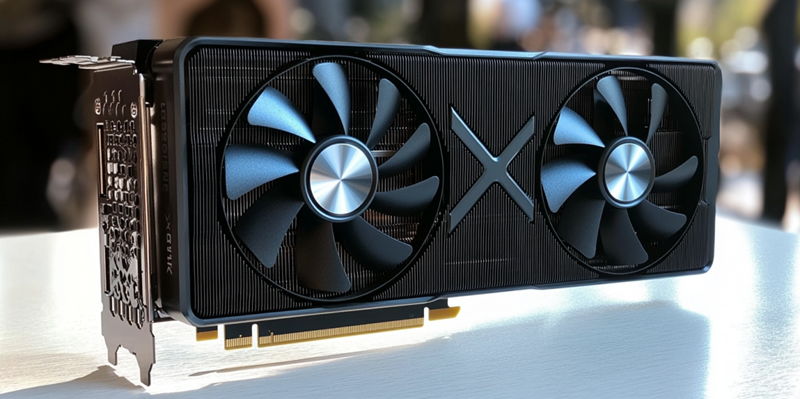The world of gaming and high-performance computing is about to witness a groundbreaking change with the introduction of NVIDIA’s upcoming flagship model, the GeForce RTX 5090. Set to lead the GeForce RTX 50 "Blackwell" gaming lineup, this new graphics card promises significant enhancements over its predecessor, the RTX 4090. From increased die size to advanced memory architecture, the RTX 5090 is designed to provide an unprecedented level of performance. As gamers and tech enthusiasts eagerly await its launch, let’s delve deeper into the features and technical specifications that make this graphics card a game-changer.
Advanced GPU Architecture
Significant Die Size Increase
One of the most notable upgrades in the RTX 5090 is the substantial increase in die size. The GB202 GPU on the RTX 5090 will measure approximately 744 mm², which marks a 22% increase when compared to the RTX 4090’s 609 mm² die. This increase in die size allows for more components to be packed onto the chip, potentially boosting performance and efficiency. Additionally, the GPU package itself will expand by 35%, reaching 3528 mm² from the previous 2601 mm². However, it’s important to note that a larger die size doesn’t necessarily imply higher power consumption or increased heat generation.
Contrary to what one might expect with a larger die size, NVIDIA has focused on optimizing power efficiency and thermal management. Improvements in the manufacturing process, particularly the implementation of TSMC’s 5nm process node, enable better power efficiency and heat dissipation. This means that users can anticipate exceptional performance without the accompanying heat issues that usually plague high-powered GPUs. The engineering advancements ensure that the RTX 5090 will deliver a remarkable increase in computational power while maintaining acceptable temperature and power usage ranges.
Enhanced Memory Architecture
Another standout feature of the RTX 5090 is its impressive 32 GB of GDDR7 VRAM. Functioning on a 512-bit interface and achieving speeds of up to 28 Gbps, this configuration results in a bandwidth of 1792 GB/s. This is a significant upgrade from previous models and is expected to substantially enhance the GPU’s overall performance. The larger L3 cache and novel memory compression strategies further bolster the GPU’s effective bandwidth. These advancements in memory architecture are designed to handle the increasing demands of modern gaming and high-performance computing applications.
In practical terms, a more advanced memory architecture means faster load times, smoother performance, and the capability to handle more complex tasks with ease. As games become more intricate and software applications more demanding, the need for high-bandwidth memory becomes paramount. NVIDIA’s commitment to pushing the boundaries of what’s possible with GPU memory is evident in the RTX 5090, making it a highly anticipated piece of hardware in the gaming community.
Structural Changes Within the GPU
Reduced Core Count
The RTX 5090 will feature 170 Streaming Multiprocessors (SMs) out of a possible 192, accumulating to 21760 cores. This represents an 11.4% reduction from the full core capacity. This reduction is slightly greater than the RTX 4090’s 11.1% core reduction when compared to its full AD102 die. While a reduced core count might seem like a downgrade, it’s essential to understand that this is a common practice in GPU design to ensure stability and performance optimization. By slightly reducing the core count, NVIDIA ensures that each core operates at its maximum potential without compromising the overall performance of the GPU.
Reducing the core count offers various benefits, such as enhanced thermal management and better power efficiency. Modern GPUs are complex pieces of technology wherein each component must harmonize with others to function optimally. Often, a slight reduction in the core count can result in a more balanced and efficient system. This meticulous approach to design and engineering is one of the reasons NVIDIA remains at the forefront of the graphics industry. Each generation of GPUs brings refinements that contribute to better performance and reliability, paving the way for future advancements.
Upcoming Launch and Broader RTX 50 Series
Launch at CES 2025
NVIDIA plans to launch the RTX 5090 at CES 2025. This highly anticipated event will likely set the stage for revealing other models in the RTX 50 series, including the RTX 5080, RTX 5070, and RTX 5060. Each of these models will feature variations in GPU core counts, memory capacity, and bandwidth, offering a diverse range of options tailored for different performance needs. This strategy allows NVIDIA to cater to a broad spectrum of users, from casual gamers to professional content creators and researchers requiring high-performance computing solutions.
The introduction of the RTX 5090 at a significant tech event like CES underscores the importance of this release in the broader context of GPU advancements. Given the detailed specifications and anticipated features, the RTX 5090 is expected to set new benchmarks in the gaming GPU market. The accompanying models in the RTX 50 series will provide users with additional options to meet their specific requirements, ensuring that NVIDIA maintains its competitive edge in the industry.
Focus on Power Efficiency and Memory Capabilities
The realm of gaming and high-performance computing is on the cusp of a revolution with the imminent arrival of NVIDIA’s latest flagship, the GeForce RTX 5090. Poised to spearhead the GeForce RTX 50 "Blackwell" series, this state-of-the-art graphics card promises transformative enhancements compared to its predecessor, the RTX 4090. Boasting a larger die size and a sophisticated memory architecture, the RTX 5090 is engineered to deliver unparalleled performance levels. As the gaming community and tech aficionados eagerly anticipate its release, it’s worth exploring the features and technical specifications that position this graphics card as a true game-changer. The RTX 5090 is expected to offer not only faster processing speeds and increased efficiency but also improved ray tracing capabilities and higher frame rates, elevating the gaming experience to new heights. With these advancements, the RTX 5090 is set to redefine what gamers and professionals can expect from a graphics card, solidifying NVIDIA’s place at the forefront of technological innovation in the industry.

